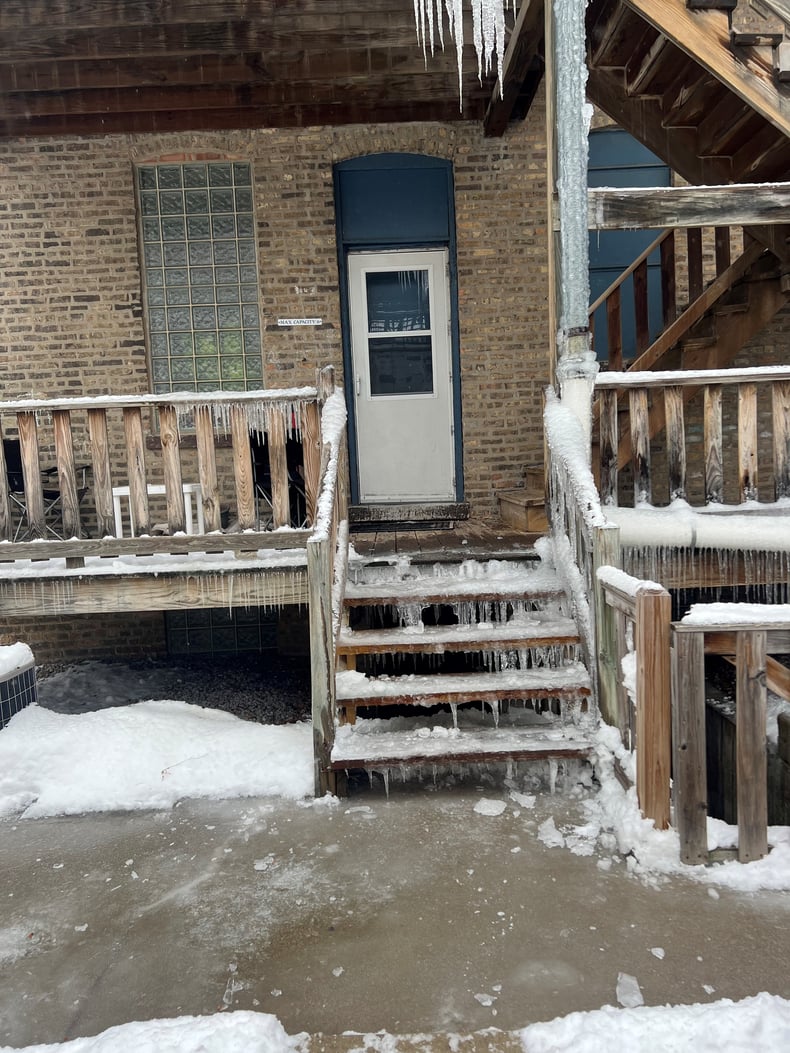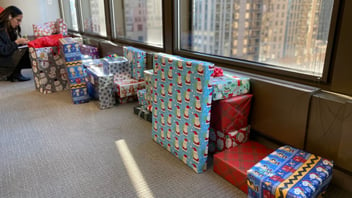"Lots of snow and ice everywhere you go"
Key tips to prepare your home for winter!
Even in winter-prone states, homes are not always ready for the change in seasons. To help you prepare your home and reduce the risk of damage to your property, we have put together a few budget-friendly tips to keep your home warm and minimize the headache of home ownership that winter often brings.
And we might even be able to save you a little money on your electric or heat bill this season!
Winterizing your home doesn't have to be as overwhelming as it sounds and often a few small steps make a big impact. If you haven't started yet, now is a great time to get ready. Winterizing your home is best done before the extreme cold sets in.
So where do you start?
Protecting your pipes: No pressure, but it's time to talk about winterizing your plumbing. When pipes freeze, the extra pressure within the pipes can cause them to burst, leading to water damage in the home.
Before extreme cold, check for blockages and winterize your pipes. Pipes in exposed areas such as outside or in the garage are vulnerable to freezing during the winter. A blocked pipe is more likely to crack under extreme pressure buildup.
Easy steps to prevent this:
1. Keep all thermostats at a minimum of 65 degrees. If you are not going to be using the water in the home (pool house or vacation home) turn off the main water supply and drain the pipes instead.
2. Add insulation to outside walls containing pipes. If you see moisture or mold on the interior surface, cracks or nail pops on the inside walls, or the walls feel cold to the touch, consider reinsulating or spraying foam.
3. Consider purchasing a low-cost pipe insulation option
Weatherstrip doors and windows: Consider purchasing a low-cost weather strip or door sweep for your windows and doors to keep the cold air out. Another easy trick is to run your ceiling fans counter-clockwise- this will help push warm air trapped near the ceiling.
Fireplace: Animal nests or creosote buildup in your fireplace can be hazardous. We recommend calling a chimney sweep to clean the chimney before each winter of use. You should also clean out the accumulated ash from the fireplace.
And close the flue when you are not using the fireplace to keep warm air from escaping.
Electric fireplaces also require regular cleaning and maintenance - follow the manufacturer's recommendation for your model.
Click here to find a certified chimney sweep in your area
Roof Preparation:
Your roof is the fire line of defense against winter and the outside elements, so it is important to protect it. Here are a few tips on preparing your roof:
1. Regularly clean your gutters before the start of the winter season
2. Inspect your roof:
a. Look for frayed, curled or missing shingles, clogged valleys, or deterioration
b. Clear leaves, pine needles, dirt, and other accumulated debris from the gutters and roof
c. Look for any areas where water is pooling
d. Look for potential trouble spots for ice damming (see below)
Ice dams:
What is it and how can you mitigate risk?
Ice dams typically occur after a heavy snowfall when snow melts and then re-freezes as ice on your roof. Snowmelt running down the roof freezes when it reaches the colder roof edge or makes contact with a cold gutter, which forms a mound of ice. The ice then re-melts and can leak through your roof to damage the interior of your home. Sometimes this happens when warm air in the attic heats up the roof and causes the snow to melt, or alternatively when temperatures are fluctuating above and below freezing points. Ice dams can cause buildup under shingles or within gutters and downspouts which eventually drip through the roof into the interior or your home.
Warning signs:
- Rust spots on drywall fasteners
- Peeling paint
- Sagging drywall
- Stains around windows or doors
- Evidence of mold or rot
Keys to prevention: (We recommend starting before winter sets in)
- Proper roof maintenance (see list above)
- Fix any known roof issues before winter
- Lay down heat cables to help water flow off the roof instead of under it
While challenging to prevent completely, quality roofing and clean gutters can reduce the risk of ice dams and prevent lasting damage. When ice dams are kept small and under control, they often naturally melt off the house without causing damage.
How to rid your home of ice dams:
- Buy a roof rake to remove the snow before it melts
- Keep your attic cold to stop water from melting into it
- If the ice dams are severe - consider hiring a professional to remove them
Attic insulation: One area often neglected when discussing home insulation is the attic but, in most cases, it is also the most important step you can take to winterize your home. Why? Because hot air rises and all the heat from your heating unit will move toward the uninsulated attic. Cold air sinks and to prevent the conduction of cold to the floors below, insulation is required. An uninsulated attic also poses damage to your roof and can cause ice dams.
Programmable thermostat: Installing a programable thermostat is one of the best ways to combat rising energy bills. And the best news... they help minimize the time you spend waiting for the house to heat up or cool down. We recommend turning the temperature down when you are away or at night and then raising it in the morning. (But remember never below 65 degrees)
General winter tools to have on hand:
- Snow shovel
- Ice scraper
- Ice melt
- Flashlights
- Winter radio
- Emergency car kit:
- Blanket
- Car charger
- Jumper cables
- First aid kit
- Water and food that does not require preparation
Although the prep work may feel daunting, winterizing your home is essential to preparing your home against the harsh elements and preventing property damage. We recommend practicing regular maintenance on your home throughout the year to make the process more efficient and less overwhelming.
We wish you and your home a warm and cozy winter!



